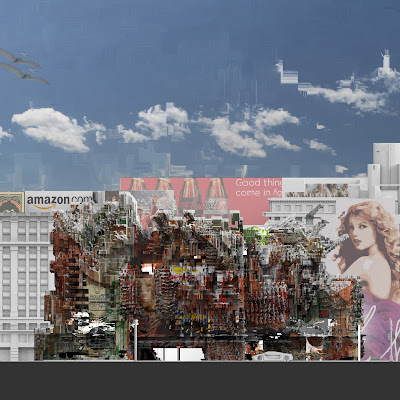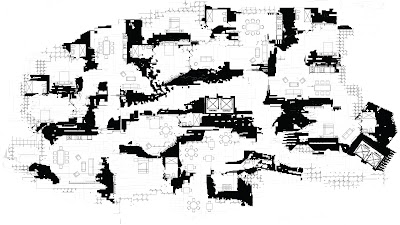Texas A&M University T4T LAB Spring 2017
Invited Professor: Casey Rehm
Team: Nathan Garcia, Tiffany Orozco, Brady Preiss, Mayra Millan.
RESOLVING THE PARALLAX PLAGUE
In this project, we sought out to accomplish two goals. The first is to remove the plague of the parallax and the second is to establish an aesthetic strangeness that invokes exploration and a critical response of the viewer.
Now the project that you see before you is not exactly the easiest on the eyes. In no traditional sense would your average Joe call it beautiful. However this grotesque quality is not something to be seen as a shortcoming of the project, but rather a strangeness inviting the onlooker to explore deeper.
In aesthetic philosophy there is you, the onlooker, the world of appearances, and your assumptions of the reality that lies behind these appearances. Now this presents us with a major issue with Humanities receptive cognition is that it is that of a singular cognition. Slavoj Zizek talks about this as the idea of Parallax. Parallax describes the conditions in which the exact same data can be examined by any number of onlookers and completely different conclusions be drawn.
Whatever could a simple human do to overcome this great shortcoming? I can promise you right now that there is hope. In Benjamin Bratton’s book, The Stack, he talks about how we utilize computational technology, or the script, to produce models as schema in which we can think about the world in geometric terms. These models are not simply divined but are rather a collection of an infinite number of stacked understandings from the design process.
In order to remove this parallax, the big data must be filtered through three machine cognitions, each equal in necessity and reliance on the other two. The first is that of the machine cognition (the script). The second is the human cognition, and the third is that of the Aesthetic Agency.
As the big data is filtered through our script machine cognition, new data is formed in the three dimensional form of the voxel and discrete elements. However, this project is primarily being formed by the over commodification and assimilation of these commodities into the structure of the building creating a crusty and ruinesque like quality. This aggregation of commodities and advertisements comes as a critique of today’s society where the populous is constantly bombarded with an endless stream of junk from the mediascape the promethean source of our big data.
The machine cognition of the Aesthetic Agency is an active agency that has a scalar understanding of data cluster resolution terminating on one end to that of a billboard and to the other end that of the ruinesque. This agency actively taps into our promethean sense of architectural tropes and utilizes these tropes to create a familiarity and ease in developing an onlookers understanding of the space.
These cognitions are always in flux and are never stagnant. The interior spaces of the building are always moving and changing based on user necessity and desires. As we were tasked with creating a multipurpose building, we further removed the idea of parallax by blurring the possible perceptions of a space and allowing them to be what they needed to be. This is similar to that of cross programing from the deconstructivists but moves beyond as it is not confined to a set number of predefined uses. Like that of a model home or an ikea store, one can imagine living in such a place while it still having retail purposes.
Through the stacking of many interfaces and processing data upon data constantly we have been able to produce this strange and grotesque building that poses a solution to that of the parallax plague and, in spite of its odd qualities, invites exploration of the onlooker to solve the puzzle of what it truly is.



